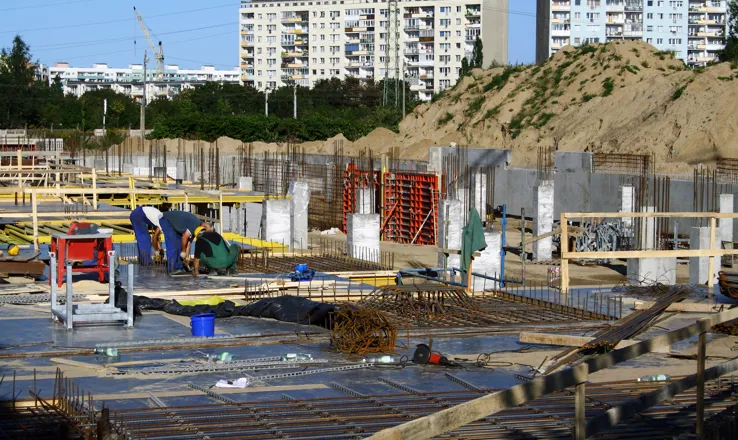Dec . 04, 2024 17:50 Back to list
Retaining Wall Formwork Manufacturing Facility Solutions for Effective Construction Projects
The Role of Shuttering in Retaining Wall Construction
In the construction industry, especially when it comes to structural elements like retaining walls, the process of shaping and supporting concrete is crucial. One significant aspect of this process involves shuttering, which is often referred to as formwork. As the demand for retaining walls grows, the need for high-quality shuttering solutions has increased, leading to the establishment of dedicated shuttering factories.
What is Shuttering?
Shuttering, or formwork, serves as a temporary mold or framework into which concrete is poured to construct a desired shape. It can be made from various materials, including timber, steel, and aluminum, and is essential for ensuring the correct dimensions and structural integrity of the poured concrete once it sets. In the context of retaining walls, which are designed to hold back soil and manage water runoff, the strength and stability provided by effective shuttering is paramount.
Types of Shuttering Used in Retaining Walls
1. Timber Shuttering This is one of the most traditional forms of shuttering. It's cost-effective and easy to work with, making it a popular choice for smaller projects. However, timber may not be as durable as other materials and is subject to warping and degradation over time.
2. Steel Shuttering Steel forms provide a robust and durable option for retaining wall construction. They are reusable and can withstand significant loads without warping, making them ideal for larger projects where longevity is important. Steel shuttering is typically more expensive upfront but offers better return on investment over time due to its reusability.
3. Aluminum Shuttering This modern form of shuttering is lightweight yet strong, offering high durability. Aluminum shuttering can be easily assembled and disassembled, providing efficiency on construction sites. It is often used in projects where precision is critical, as it allows for tighter tolerances in the concrete forms.
4. Plastic Shuttering An emerging alternative is plastic shuttering, which is lightweight and resistant to moisture. It is easier to clean and can be reused multiple times, providing an eco-friendly solution for construction projects.
Manufacturing Shuttering
retaining wall shuttering factory

The establishment of a shuttering factory is not just about producing forms; it involves a blend of technology, precision engineering, and an understanding of the construction industry’s needs. Modern shuttering factories utilize advanced manufacturing techniques, including computer-aided design (CAD) and automated cutting processes, to create high-quality shuttering solutions.
In a shuttering factory, raw materials are processed to manufacture different types of forms suited for various building requirements. Quality control is a crucial stage, ensuring that each piece of shuttering meets the specified standards for safety and durability. This is especially important in the construction of retaining walls, where the pressure exerted by the soil can be immense, requiring forms that can withstand these forces during the pouring process.
Benefits of Quality Shuttering in Retaining Walls
Investing in high-quality shuttering offers numerous advantages in retaining wall construction
1. Structural Integrity Properly designed and manufactured shuttering provides the support necessary during the curing process of concrete. This ensures that the retaining wall maintains its shape and strength over time.
2. Cost Efficiency High-quality, reusable shuttering systems reduce the need for frequent replacements, lowering overall project costs. By investing in durable materials, contractors can save money while ensuring high performance.
3. Time Savings Efficient shuttering systems allow for quicker assembly and disassembly, leading to reduced labor costs and faster project completion times.
4. Flexibility Modern shuttering solutions offer flexibility in design, allowing for a variety of shapes and sizes to meet specific project requirements. This adaptability is critical in environments where space and structural challenges are present.
Conclusion
The significance of shuttering in the construction of retaining walls cannot be overstated. As the demand for these structures increases, so too does the importance of investing in high-quality shuttering solutions. Dedicated shuttering factories play a vital role in this sector, ensuring that builders have access to reliable and innovative formwork options. By understanding the various types of shuttering and the benefits they bring, construction professionals can make informed decisions that enhance the durability and effectiveness of their projects. In turn, this leads to safer, more efficient construction practices that can withstand the test of time.
-
High-Quality U Head Jack Scaffolding – Reliable Scaffolding Jack Head Manufacturer & Factory
NewsJul.08,2025
-
High-Quality I Beam H20 Leading Timber Beam H20 Material Factory, Exporters & Manufacturers
NewsJul.08,2025
-
High-Quality Powder Coating Steel Formwork - Durable & Corrosion Resistant Solutions
NewsJul.07,2025
-
Inclined Column Formwork Supplier – Durable & Precise Solutions for Unique Structures
NewsJul.07,2025
-
High-Quality Water Stop Solutions Trusted Water Stop Company & Suppliers
NewsJul.07,2025
-
High-Quality Formwork Material Supplier Reliable Manufacturer & Factory Solutions
NewsJul.06,2025